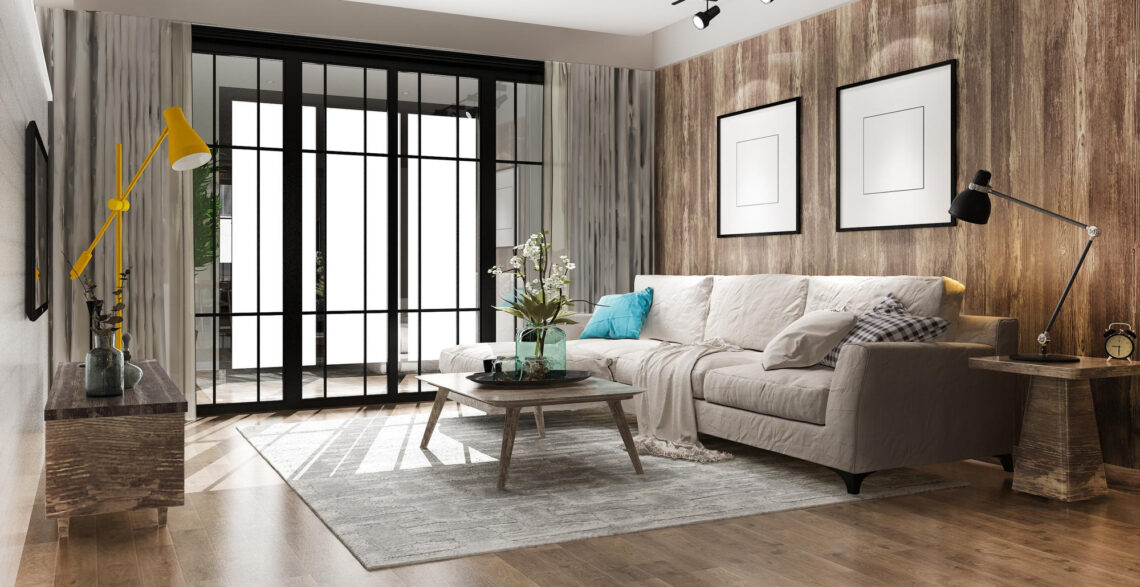Hardwood flooring is a popular choice for many homeowners due to its durability, beauty, and longevity. However, maintaining and protecting hardwood flooring is essential to ensure its longevity and beauty. Hardwood floors can become scratched, dented, or discolored over time due to daily wear and tear, spills, and pet accidents. In this article, we will discuss five ways to protect hardwood flooring and keep it looking its best.
- Regular Cleaning
One of the most important things you can do to protect your hardwood flooring is to keep it clean. Dirt and debris can scratch and dull the surface of your floors over time. Regularly sweeping, dusting, or vacuuming your hardwood floors can remove any loose debris that may cause scratches. Be sure to use a soft-bristled broom or vacuum attachment to avoid scratching the floors.
In addition to dry cleaning, you should also mop your hardwood floors regularly. Use a damp mop and a hardwood floor cleaner recommended by the manufacturer. Avoid using harsh chemicals or excessive water when cleaning your floors as this can damage the wood.
- Protect from Furniture Scratches
Furniture is another common culprit of hardwood floor damage. You can protect your hardwood floors from scratches by placing felt pads on the bottom of furniture legs. These pads act as a buffer between the furniture and the floor, preventing scratches and dents. You can purchase felt pads at most hardware stores or online.
In addition to felt pads, you can also use area rugs or furniture coasters to protect your hardwood floors from scratches. Place an area rug under high-traffic areas or in front of furniture to prevent scratches from foot traffic. Furniture coasters, which are typically made of rubber or felt, can also be placed under furniture legs to protect the floors.
- Use Mats and Rugs
Water and moisture can also damage hardwood flooring over time. Placing mats or rugs at entryways and high-traffic areas can prevent dirt and moisture from being tracked onto the floors. Mats and rugs can also protect your hardwood floors from spills and pet accidents.
Be sure to choose mats and rugs with a non-slip backing to prevent slips and falls. Avoid using mats or rugs with rubber or latex backing, as this can cause discoloration or damage to the wood. Instead, opt for natural fiber rugs, such as jute or cotton.
- Maintain Humidity Levels
Hardwood flooring is sensitive to changes in humidity levels. In low humidity environments, hardwood floors can shrink and develop gaps between the boards. In high humidity environments, hardwood floors can expand and warp.
To protect your hardwood flooring, maintain a consistent humidity level of 35-55%. You can use a humidifier or dehumidifier to maintain optimal humidity levels. Be sure to follow the manufacturer’s instructions and maintain the unit regularly to prevent mold or bacteria growth.
- Refinish and Seal
If your hardwood floors have scratches or discoloration, refinishing and sealing the floors can restore their beauty and protect them from further damage. Refinishing involves sanding down the floors and applying a new stain and finish. This process can remove scratches and dents and give the floors a new look.
Sealing the floors after refinishing can also protect them from water damage and scratches. A high-quality sealant can provide an extra layer of protection to your hardwood flooring, helping to extend its life and beauty.
Conclusion
Hardwood flooring is a beautiful and durable option for many homeowners. However, it requires regular maintenance and protection to keep it looking its best. Regular cleaning, protecting from furniture scratches, using mats and rugs, maintaining humidity levels, and refinishing and sealing the floors are all important ways to protect your hardwood flooring. By following these tips, you can extend the life of your hardwood floors and enjoy their beauty for years to come

